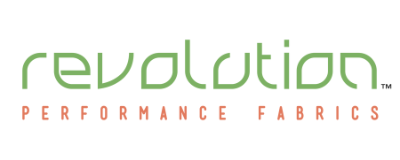
What is Performance Fabric?
Performance Fabric is a term used in the furniture industry to describe fabrics that are easy to clean and withstand the wear and tear of everyday life. Simple stains should be able to come out with a little water and blotting. Tough stains like coffee, cupcakes, and dirty paws, should be able to come out with some household or upholstery cleaner. Performance fabrics should also resist abrasion over the long term. You shouldn’t see the fabric start to fall apart after a year of use. Performance Fabric is the best choice for high traffic areas and living spaces needing to stand the test of time.
Where did the Performance Fabric term come from? Early adapters of the performance fabric category were outdoor cushion and fabric manufacturers. These companies saw a need for fabric that would stay outdoors, be easy to clean, and withstand outdoor weathering. Soon after the outdoor performance fabrics were created, you saw a transition of these fabrics indoors to compete against life’s messes. Today we see a variety of performance fabrics. Some Outdoor, some indoor, and those who can perform in both outdoor and indoor spaces. Let’s look at the pros and cons of different performance fabrics.
Types of Performance Fabrics
There are multiple ways to achieve performance, but the most common way is to choose a thread that possesses performance traits or by chemically treating (coating) a fabric.
Typical performance fabric traits are: water resistance, stain resistance, mold and mildew resistance, light fastness, durability, and antimicrobial traits. The most common threads used for performance upholstery fabric are olefin, acrylic, nylon, and polyester. Not all the threads listed have all the same performance traits so they either have to be inherently stain resistant or treated/coated. Chemically speaking, I could talk about the finishes used to make some upholstery fabrics into performance fabrics, but I'd like to focus on the fibers that are not treated with chemicals. Below are some distinct characteristics of the types of materials used to make performance upholstery fabrics.
Olefin (Revolution is 100% Olefin)
- Resists moisture and mildew
- Resists chemicals
- Resists abrasion
- Resists Stains
- Washable and easy to clean
- Flat woven fabrics, velvets, and textures designs can be achieved
- Sensitive to higher heat temperatures
- Does not need to be chemically treated to have performance traits
- Can be woven by itself or with other performance/nonperformance fibers
- Uses no Land or Water to produce
- Upcycled from petroleum production
- Easily recycled
- Quick Drying
- Low Static
- Low resistance to high heat
Acrylic
- Closely resembles wool in character
- Easy to wash
- Good dimensional stability
- Resistance to chemicals
- Colorfastness and can be dyed
- Can be woven by itself or with other performance/nonperformance fibers
- Resists Shrinkage and wrinkles
- Resists mildew and insects
- Easy to Clean
- Hydrophobic (repels water)
- Static Electricity buildup due to hydrophobic properties
- Not the most abrasion resistant fabric
- Known to pill (leaves tiny lint balls)
- Burns easily and difficult to extinguish
Nylon
- Resists mildew and mold
- Low resistance to light
- Low resistance to heat
- Usually treated to prevent stains
- Low absorbency
- Usually lustrous fiber – shiny
- Durable
- Elastic properties
- Picks up other colors during wash
- Not susceptible to shrinkage
- Stain removal can be an issue
Polyester
- Durable
- Crisp yet soft to the touch
- Resists stretching and shrinkage
- Washable and dry-cleanable
- Quick drying
- Resilient to most chemicals
- Resists abrasion
- Because of low absorbency, stain removal can be an issue
- Static and piling issues
- Blends well with other fibers
Revolution™ chose Olefin as the main fiber in their upholstery fabric. Olefin has is inherently stain resistant without the use of any PFC chemicals or any type of chemical coating. Olefin is also an upcycled fiber and uses very little of our earth's resources to make. Revolution is proud to offer a fabric that achieves a high level of performance without the use of PFC chemicals.




Comments
Leave a comment